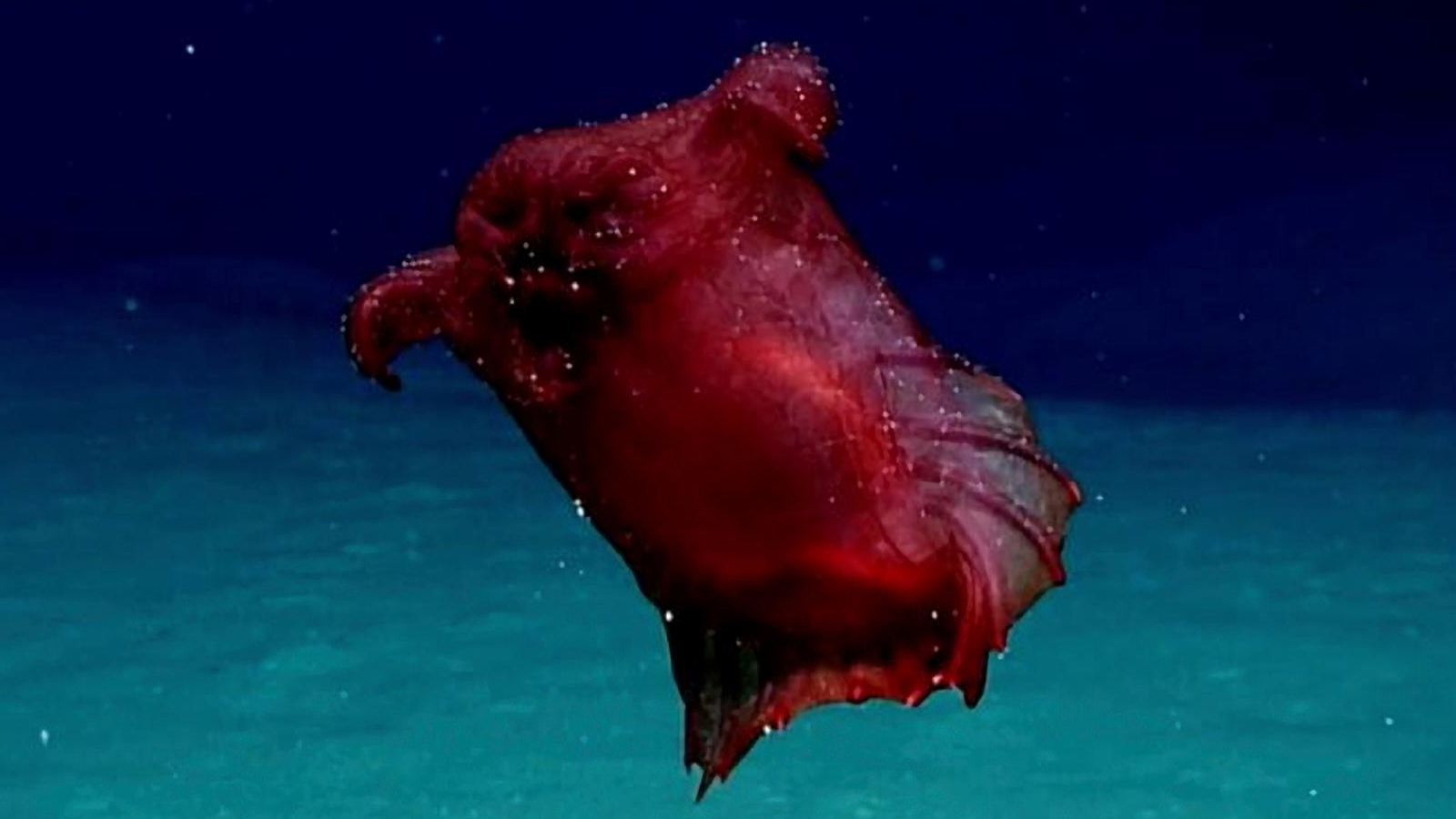Headless chicken monster: The deep sea cucumber with tubular feet for gobbling sediment
This swimming sea cucumber looks like a chicken carcass, eats poop floating in the water and uses defecation as a means of propulsion.

Name: Headless chicken monster (Enypniastes eximia)
Where it lives: The depths of the world's oceans
What it eats: Marine snow (organic matter that floats from the surface down to the seabed)
If you happened upon this bizarre creature in the ocean, you could be forgiven for thinking someone had flung a chicken carcass into the sea and it was bobbing along on the current — hence its nickname, "the headless chicken monster."
But this strange creature is actually a sea cucumber that lives deep beneath the surface, generally below 1,600 feet (500 meters) and down to the seafloor.
It is a deep burgundy color, has webbed structures on its body for swimming and grows to a length of up to 9.8 inches (25 centimeters) — roughly the same size as a small roast chicken.
Scientists know very little about this mysterious deep-sea cucumber because it is very fragile and easily damaged when researchers try to collect samples.
It has been observed crawling along the seafloor using appendages called "tube feet" to scoop up sediment and stuff it into its mouth. According to a video from the National Oceanic and Atmospheric Administration's (NOAA) Office of Ocean Exploration and Research, headless chicken monsters are trying to extract organic material from the sediment.
Related: Watch 'spaghetti monster' with dozens of pink-tipped sausage legs swimming near Nazca Ridge
Like ploughing a field, working the seafloor helps keep the habitat healthy by clearing out and aerating the sediment, according to an NOAA post by Christopher Mah, a zoologist specializing in invertebrates at the Smithsonian National Museum of Natural History.
Get the world’s most fascinating discoveries delivered straight to your inbox.
This is a gruelling way to get nutrients. "You really have to pass a lot of sediment through your gut to get any nutrition out of this sediment," an NOAA representative said in the video.
The sea cucumber can also swim by holding itself upright and flapping fin-like structures that fringe the top and bottom of its body. "Although it typically spends its days gobbling up detritus among sediment grains on the seabed, the unique behavior to swim through the water column helps it avoid predators, locate to new feeding areas, and delight science teams," a representative from Nautilus Live wrote in the text accompanying a YouTube video of the creature.
This gelatinous animal is neutrally buoyant but has a cheeky strategy to give itself an extra lift. When it needs to take off into the water column, it sometimes lightens the load by pooping as it swims away.

Melissa Hobson is a freelance writer who specializes in marine science, conservation and sustainability, and particularly loves writing about the bizarre behaviors of marine creatures. Melissa has worked for several marine conservation organizations where she soaked up their knowledge and passion for protecting the ocean. A certified Rescue Diver, she gets her scuba fix wherever possible but is too much of a wimp to dive in the UK these days so tends to stick to tropical waters. Her writing has also appeared in National Geographic, the Guardian, the Sunday Times, New Scientist, VICE and more.
You must confirm your public display name before commenting
Please logout and then login again, you will then be prompted to enter your display name.


